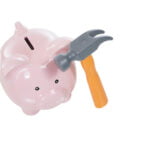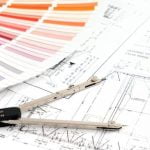Are you a veteran or active-duty service member considering a VA mortgage? If so, you may be wondering if it’s possible to add home improvements to your loan. In this article, we will explore the possibilities and benefits of incorporating home improvements into your VA mortgage.
Firstly, let’s understand what a VA mortgage is and its eligibility requirements. A VA mortgage is a home loan program specifically designed for veterans, service members, and their eligible spouses. It offers several advantages such as no down payment requirement and competitive interest rates. Eligibility requirements include serving a certain number of days during wartime or peacekeeping periods and fulfilling specific service criteria.
Now that we have established what a VA mortgage entails, let’s delve into the topic of adding home improvements to your loan. This section will discuss the potential options available to borrowers with VA mortgages, how they can take advantage of these opportunities, and the guidelines and limitations associated with incorporating home improvements into their loans.
By exploring these topics in detail, we aim to provide you with valuable insights on whether it is feasible for you to enhance the value and functionality of your home through your VA mortgage funds. Additionally, we will also uncover potential tax benefits and increased equity that can be achieved through strategic home improvements.
In the subsequent sections of this article, we will guide you through preparing for home improvement financing, navigating the crucial appraisal process for homes with improvements, identifying popular home improvement projects eligible for VA financing, finding reputable contractors experienced in working with VA projects, as well as outlining the step-by-step process for adding home improvements to your VA mortgage.
Join us on this informative journey as we unlock the untapped potential of your VA mortgage through strategic home improvements.
Home Improvement Options for VA Mortgage Borrowers
For VA mortgage borrowers, there are a variety of home improvement options that can be explored to enhance the value and functionality of their homes. Through a VA mortgage, borrowers have the opportunity to finance home improvements along with the purchase or refinance of their property. This provides them with the flexibility to make desired changes and upgrades without having to incur additional debt or seek separate financing.
One option for VA mortgage borrowers is to use the VA’s Energy Efficient Mortgage (EEM) program. This program allows borrowers to finance energy-efficient improvements, such as solar panels, insulation, and HVAC upgrades, into their mortgage. By making these energy-efficient upgrades, borrowers can reduce their utility bills and contribute to a more sustainable living environment.
Another option for VA mortgage borrowers is the VA Renovation Loan program. This program allows borrowers to finance both the purchase or refinance of a home and the cost of renovations or repairs into one loan. It provides a convenient way for borrowers to address any needed repairs or desired updates without having to obtain separate financing.
To take advantage of these home improvement options, VA borrowers need to understand the guidelines and limitations set by the VA. The VA has specific requirements regarding what types of improvements can be financed and how much funding can be allocated towards them. It’s important for borrowers to work closely with a VA-approved lender who can guide them through the process and ensure that all necessary documentation and approvals are obtained.
Benefits of Adding Home Improvements to Your VA Mortgage
Enhancing the value and functionality of your home with VA mortgage funds
One of the key benefits of adding home improvements to your VA mortgage is the ability to enhance both the value and functionality of your home. By using VA mortgage funds to finance renovations or upgrades, you can transform your house into a more comfortable and desirable living space. Whether it’s updating an outdated kitchen, adding an extra bedroom, or renovating a bathroom, these improvements can significantly increase the value of your property.
In addition to boosting your home’s market value, home improvements can also improve its functionality. For example, installing energy-efficient windows or upgrading insulation can help reduce energy costs and create a more comfortable living environment.
Adding a deck or patio can provide additional outdoor living space for entertaining guests or enjoying family time. By strategically planning and implementing home improvements with your VA mortgage, you have the opportunity to create a home that not only meets your current needs but also enhances its long-term appeal.
Increasing energy efficiency and sustainability with home improvements
Another notable advantage of adding home improvements to your VA mortgage is the ability to increase energy efficiency and promote sustainability. With growing awareness about environmental impact and rising energy costs, many homeowners are opting for green upgrades that not only save money but also contribute to a greener future.
Through the use of VA mortgage funds, you can invest in various sustainable upgrades such as solar panels, high-efficiency appliances, programmable thermostats, or even converting to renewable energy sources. These investments not only reduce utility bills but also decrease reliance on fossil fuels and minimize greenhouse gas emissions. Incorporating environmentally friendly solutions into your home through strategic improvements can lead to long-term savings while creating a more eco-friendly living space.
Potential tax benefits and increased equity through strategic home improvements
Adding home improvements to your VA mortgage may also offer potential tax benefits and increased equity in your property. In some cases, certain home improvements can qualify for tax deductions or credits, creating additional financial incentives for homeowners who choose to finance renovations through their VA mortgage.
Furthermore, by adding value to your home through well-planned and executed improvements, you have the opportunity to build equity. Equity is the difference between the current market value of your home and the remaining balance on your mortgage.
As you increase the value of your property through home improvements, you are effectively growing your equity. This increased equity can be beneficial if you plan to sell your home in the future or if you want to leverage it for other financing needs.
Overall, by taking advantage of the benefits associated with adding home improvements to your VA mortgage, you not only enhance the value and functionality of your home but also contribute to energy efficiency efforts and potentially increase your equity. Consider exploring this option further to unlock the full potential of your VA-financed home.
Preparing for Home Improvement Financing
Before embarking on any home improvement project, it is important to assess your needs and priorities. Take the time to carefully evaluate which areas of your home require attention or upgrades. This will help you create a clear plan and prioritize your projects based on their urgency and potential impact on the value of your home.
Once you have identified your home improvement needs, it is essential to estimate the costs and budget accordingly. Research the average costs for various types of improvements in your area, taking into account any additional expenses such as permits, materials, and labor. By creating a realistic budget upfront, you can avoid overspending or running out of funds during the project.
After estimating the costs, evaluate the feasibility of adding home improvements to your VA mortgage. Consider factors such as your current loan balance, interest rate, and whether refinancing is an option. Additionally, take into account any restrictions or limitations imposed by the VA regarding what types of home improvements can be financed through their program.
If adding home improvements to your VA mortgage is feasible and aligns with your overall goals, it may be worth exploring this option further. Homeowners who choose to utilize their VA mortgage for financing their renovations often find that it allows for more flexibility in terms of borrowing capacity and interest rates compared to other financing options.
Once you have completed these preparatory steps and determined that adding home improvements to your VA mortgage is a viable option, it’s time to move forward with obtaining financing for your projects. Reach out to a reputable VA approved lender who can guide you through the process and ensure that all necessary paperwork and requirements are met.
By thoroughly preparing for home improvement financing through a VA mortgage, homeowners can confidently embark on projects that enhance their homes’ value while taking advantage of favorable borrowing terms offered by this unique program.
Navigating the VA Appraisal Process for Home Improvements
The VA appraisal process plays a crucial role in determining the feasibility and potential impact of home improvements on your VA-financed home. It is important to understand how this process works and the requirements set by the VA.
One of the key factors in the VA appraisal process is ensuring that any proposed home improvement meets the VA’s Minimum Property Requirements (MPRs). These requirements are put in place to ensure that homes purchased with a VA mortgage meet certain safety, security, and livability standards. The MPRs cover various aspects of the property, including electrical systems, heating and cooling systems, roofing, plumbing, and more.
To navigate the VA appraisal process for home improvements successfully, it is essential to:
- Research and understand the specific MPRs applicable to your desired home improvements. This will help you plan your project accordingly and ensure compliance with VA guidelines.
- Consult with a licensed contractor or architect who has experience working with VA-financed projects. They can provide guidance on designing improvements that meet safety standards while aligning with your needs.
- Communicate openly with your VA-approved lender throughout the process. They can guide you through any additional steps or documentation required by the VA for appraising homes with improvements.
By adhering to these steps and maintaining clear communication with all parties involved, you can increase the chances of a successful appraisal process for your desired home improvements using your VA mortgage funds.
It’s important to note that not all home improvements will automatically increase the appraised value of your property. However, making energy-efficient upgrades such as installing solar panels or upgrading insulation may positively impact both the energy efficiency rating of your home and its market value.
Popular Home Improvements Eligible for VA Financing
When it comes to using your VA mortgage for home improvements, there are a variety of options available that can help you enhance the value and functionality of your home. With this financing opportunity, VA borrowers can tackle a wide range of projects that can increase energy efficiency, improve sustainability, and ultimately boost the overall appeal of their homes.
Some of the most popular home improvement projects eligible for VA financing include kitchen remodels, bathroom renovations, roof replacements, and adding solar panels. These types of improvements not only make your home more comfortable and functional but also have the potential to significantly increase its market value.
A kitchen remodel is a common project that homeowners often choose to tackle with their VA mortgage funds. Upgrading appliances, installing new cabinets and countertops, or even expanding the space can greatly enhance the functionality and aesthetic appeal of your kitchen.
Bathroom renovations are also highly sought after when it comes to home improvements. Whether it’s updating fixtures and finishes or completely transforming the layout, these upgrades can greatly enhance the comfort and value of your home.
Replacing an old roof with a new one is another smart investment that can be financed through a VA mortgage. Not only does it improve the overall look of your home’s exterior but it also ensures better protection against the elements.
Adding solar panels to your home is a great way to improve energy efficiency while reducing utility costs. With advancements in technology, solar panel installations have become more affordable and accessible for homeowners looking to save money on their energy bills.
By utilizing a VA mortgage for these popular home improvement projects, not only are you investing in the comfort and convenience of your current living situation but you are also increasing the long-term value and appeal of your property. The key is to carefully evaluate which improvements align with your goals and budget while taking advantage of the benefits offered by this unique financing opportunity.
| Popular Home Improvements | Description |
|---|---|
| Kitchen Remodels | Upgrade appliances, install new cabinets and countertops, or expand the space for a more functional and aesthetically pleasing kitchen. |
| Bathroom Renovations | Update fixtures and finishes or completely transform the layout to enhance comfort and value. |
| Roof Replacements | Replace old roofs with new ones for improved protection against the elements and enhanced curb appeal. |
| Solar Panel Installations | Add solar panels to improve energy efficiency and reduce utility costs over time. |
How to Find Reputable Home Improvement Contractors for VA Projects
Finding reputable home improvement contractors is an essential step in successfully completing VA projects. When searching for contractors, it is important to select qualified professionals who are experienced with VA mortgage projects. Here are some tips to help you find reputable home improvement contractors for your VA projects:
- Research contractor credentials, licenses, and insurance requirements: Before hiring a home improvement contractor, it is crucial to research their credentials and licenses. Make sure the contractor has the necessary qualifications and certifications to work on your project. Additionally, check if they have the required insurance coverage, such as liability insurance and workers’ compensation insurance, to protect both you and them in case of accidents or damages during the project.
- Get recommendations from trusted sources: Reach out to friends, family members, or colleagues who have recently completed home improvement projects and ask for recommendations. Their firsthand experiences can provide valuable insights into the quality of workmanship and professionalism of different contractors. Additionally, you can also consider asking local real estate agents or VA loan specialists for referrals.
- Read online reviews and testimonials: Explore online platforms that provide reviews and ratings of home improvement contractors in your area. Websites such as Yelp, Angie’s List, or Houzz can give you an idea of other customers’ experiences with the contractors you are considering. Pay attention to both positive and negative reviews to get a well-rounded perspective.
- Schedule consultations and obtain multiple bids: Once you have narrowed down your choices to a few potential contractors, schedule consultations with each of them. During these meetings, discuss your project details and expectations in detail while also asking questions about their experience and approach to working on VA mortgage projects.
| Considerations | Tips |
|---|---|
| Research contractor credentials | Before hiring a home improvement contractor for a VA project, ensure that they have the necessary credentials and licenses to work on your project. |
| Get recommendations | Ask friends, family members, or colleagues for recommendations on reputable home improvement contractors they have worked with in the past. |
| Check online reviews | Read online reviews and testimonials on platforms like Yelp or Angie’s List to gauge other customers’ experiences with potential contractors. |
| Schedule consultations | Set up consultations with multiple contractors to discuss your project requirements and gather insights into their experience. |
By following these tips, you can find reputable home improvement contractors who are experienced in working with VA projects. Taking the time to research and select qualified professionals will help ensure a smooth and successful completion of your VA financed home improvements. Remember to also trust your intuition during the selection process and choose a contractor who communicates effectively, understands your vision, and is committed to delivering high-quality workmanship.
Steps to Add Home Improvements to Your VA Mortgage
Adding home improvements to your VA mortgage can be a straightforward process if you follow the right steps. Here is a step-by-step guide to help you navigate the process:
- Assess your home improvement needs and priorities: Before starting any home improvement project, it’s important to understand what you want to achieve and prioritize your needs. Evaluate which improvements will add the most value or enhance functionality to your home.
- Estimate the costs and budget for desired home improvements: Once you have identified your priorities, estimate the costs associated with each improvement. This will help you determine how much financing you need and if it fits within your budget.
- Consult with a VA approved lender: Contact a VA approved lender who can guide you through the process of adding home improvements to your VA mortgage. They will assess your eligibility, review your financial situation, and provide information on the available financing options for home improvements.
- Submit necessary documentation: To apply for a VA loan modification, you will need to submit certain documents such as proof of income, proof of residence, tax returns, etc. Your lender will provide a detailed list of required documents.
- Get contractor bids and select the best option: Once you have determined the financing options for your home improvements, start obtaining bids from reputable contractors experienced with VA mortgage projects. Compare their proposals carefully and select the one that best suits your needs in terms of quality, cost, and timeline.
- Complete necessary paperwork: Work closely with your chosen contractor and lender to complete all necessary paperwork related to adding home improvements to your VA mortgage. This may include signing contracts, providing invoices and permits, etc.
- Start the construction process: Once all paperwork is complete, work with your contractor to begin the construction process according to the agreed-upon timeline and project scope.
- Disbursement of funds: As work progresses on your home improvements, funds from your VA mortgage will be released in periodic disbursements based on the agreed-upon schedule. This ensures that the funds are used for their intended purposes and that quality standards are maintained.
- Project completion and final inspection: Once the construction is complete, your contractor will conduct a final inspection to ensure that all work has been done according to specifications. This will be followed by a VA appraisal to assess the value of the improvements.
By following these steps, you can successfully add home improvements to your VA mortgage. Remember to work closely with your lender, contractor, and adhere to VA guidelines throughout the process. Enjoy unlocking the full potential of your VA-financed home with these upgrades.
Conclusion
In conclusion, adding home improvements to your VA mortgage can be a valuable option for VA borrowers. By taking advantage of this opportunity, you can enhance the value and functionality of your home while enjoying the benefits of a VA mortgage.
One of the main benefits of adding home improvements to your VA mortgage is the ability to increase energy efficiency and sustainability. With the funds from your mortgage, you can invest in energy-efficient appliances, insulation upgrades, or renewable energy systems. These improvements not only reduce utility costs but also contribute to a more environmentally-friendly home.
Furthermore, strategic home improvements can potentially offer tax benefits and increase equity in your property. Certain improvement projects may qualify for tax credits or deductions, allowing you to save money in the long run. Additionally, by making smart renovations that align with market trends and buyer preferences, you can increase the resale value of your home and build equity over time.
In summary, adding home improvements to your VA mortgage offers numerous advantages. It allows you to create a more comfortable and functional living space while also increasing the value of your property.
Whether it’s upgrading your kitchen or replacing your roof, take the time to evaluate your renovation needs and explore the possibilities available through a VA mortgage. By unlocking the potential of your VA-financed home with these improvements, you can enjoy long-term benefits and maximize the value of your investment.
Frequently Asked Questions
Can you include upgrades in a VA mortgage?
Yes, upgrades can be included in a VA mortgage. The Department of Veterans Affairs (VA) allows borrowers to include the cost of certain upgrades and improvements in their VA loans.
These upgrades may include energy-efficient features, accessibility improvements, or even the addition of a new room. Including upgrades in a VA mortgage can provide veterans with an opportunity to finance these improvements without having to come up with additional funds upfront.
Can you include renovation costs in a VA loan?
Yes, renovation costs can be included in a VA loan. Similar to upgrades, renovation costs can be financed through a VA loan as long as they meet certain requirements set by the VA.
This allows veterans to make necessary renovations or repairs on their homes while still benefiting from the favorable terms and conditions offered by VA loans, such as lower interest rates and no down payment requirement.
Can home improvements be added to mortgage?
Yes, home improvements can be added to a mortgage. While this depends on the specific type of mortgage and lending institution, many lenders offer options for borrowers to include home improvement costs in their mortgage. This can be done through various methods, such as refinancing or obtaining a home equity loan or line of credit.
Including home improvements in a mortgage can provide homeowners with an affordable way to fund renovations or repairs and potentially increase the value of their property over time. It is important for borrowers to carefully consider their financial situation and consult with lenders to determine the best course of action for adding home improvements to their mortgage.

I’m thrilled to have you here as a part of the Remodeling Top community. This is where my journey as an architect and remodeling enthusiast intersects with your passion for transforming houses into dream homes.





